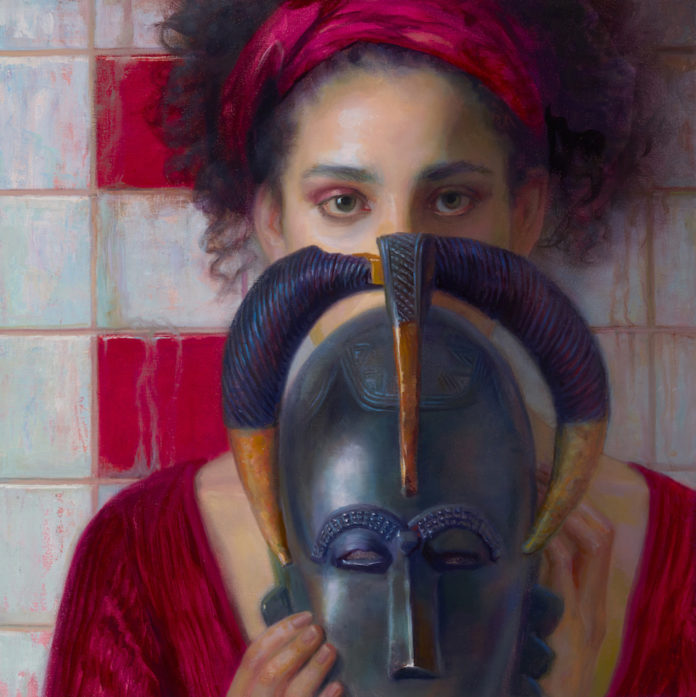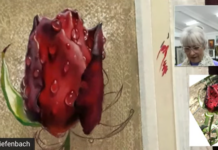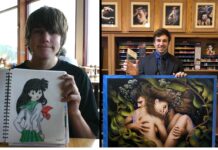A Contemporary Realism Step-by-Step > We first discovered the work of Manu Saluja when she shared one of her paintings, “Purandi #2” (below) in celebration of International Women’s Day. Here, she shares her step-by-step process for painting another realism portrait, titled “Sequel #2.”
On Painting the Contemporary Realism Portrait “Séquel #2”
by Manu Saluja
manusaluja.com
This portrait is of Séquel, an art model and friend. She is seen holding an African mask that has symbolic weight in her personal history and in the tragic and broader history of the African slave trade in Latin America.
Her mother, of Afro-Puerto Rican and Salvadoran decent, died when she was 10 years old. Her father is Sicilian and German. She shared her personal challenges of being a mixed race woman in an environment that did not always allow her to fully own and be proud of her heritage. Seeing this mask from Central Africa in a nearby store, she felt a connection to it because of her Afro-Puerto Rican roots.
The following is my step-by-step process for painting her portrait.
I begin most paintings by drawing directly on primed, untoned linen canvas with raw umber oil pigment. My focus is on compositional choices such as placement, proportion and tonal masses of lights and darks. I don’t typically create a highly rendered drawing because I build up the painting directly with oil color.
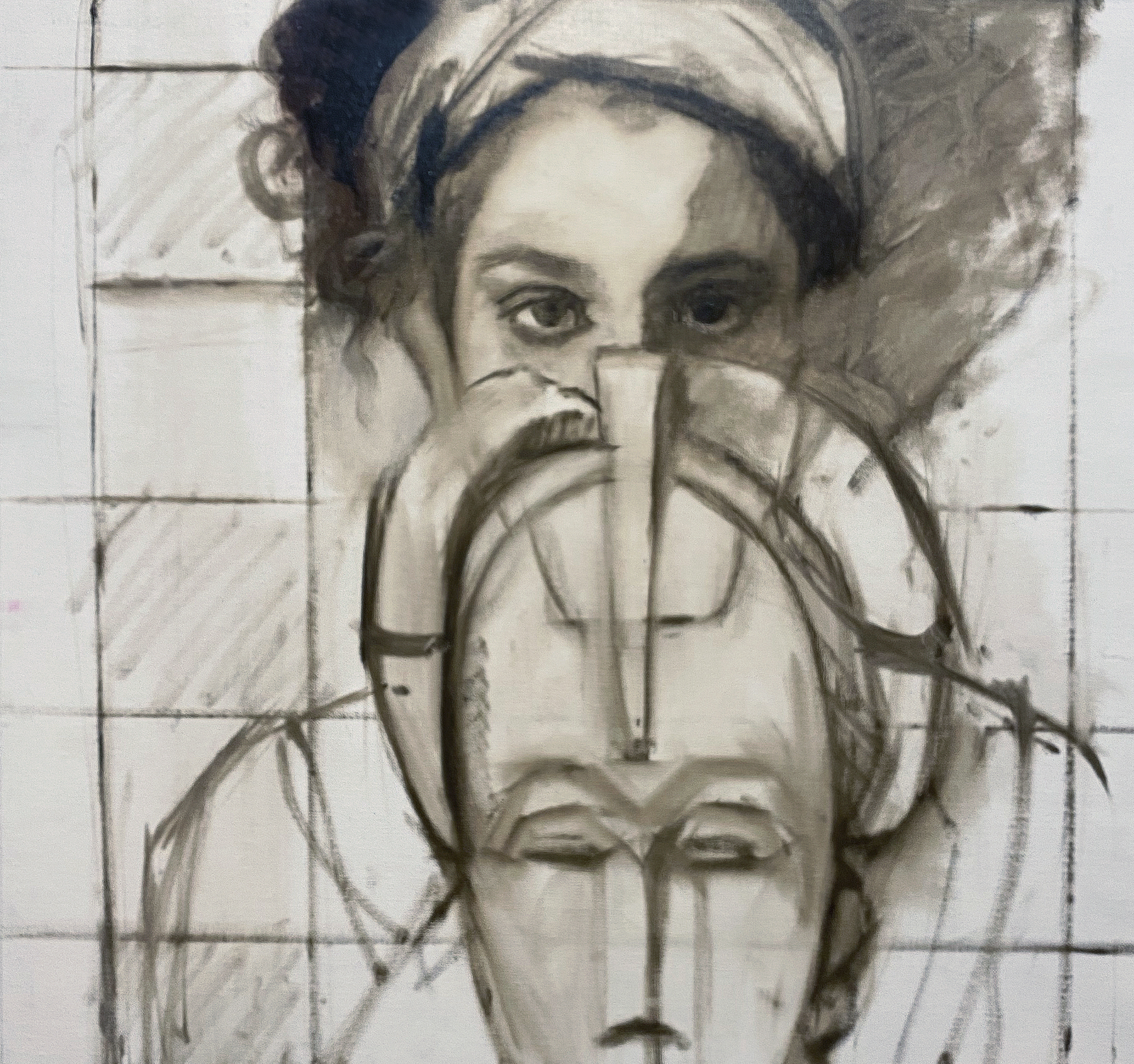
***
Most areas of the painting were started with color washes created by mixing cold pressed linseed oil and mineral spirits into reds, magentas and umbers for the New York City subway tiles, hair and clothing. Because the visual perception of flesh tones can change dramatically depending on the context of relative color and value, it’s important to consider the composition as a whole.
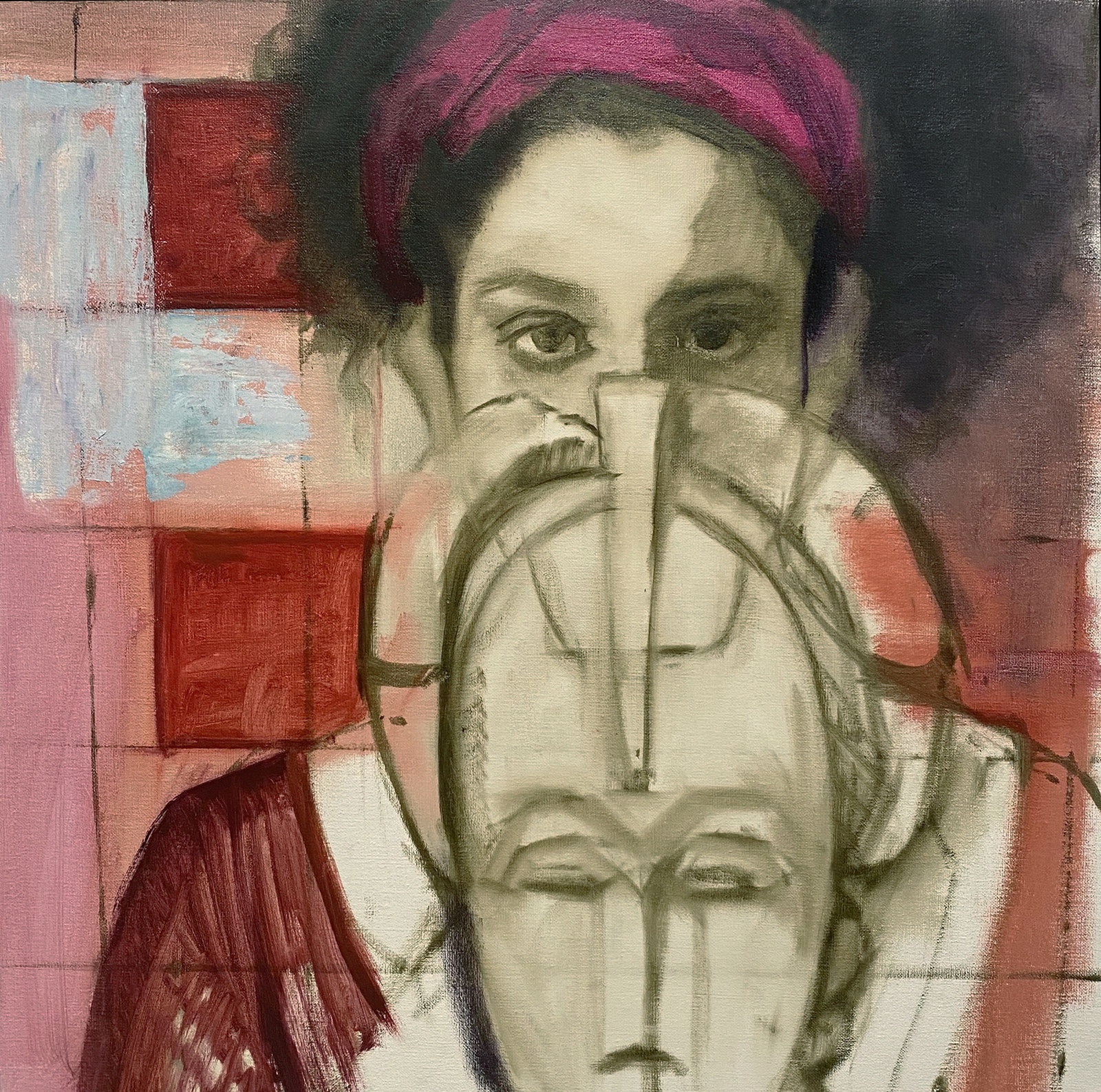
***
Blocking in bold value and color shifts, I begin with large planes and forms then proceed with layering smaller ones on top. As I work, I choose which areas will have opaque applications of paint, and where I’ll want transparent color washes to peek through. While there are no two paintings of mine that have been done with the same exact strategies, I often build up opacity in the lights and more transparent layers in the darks.
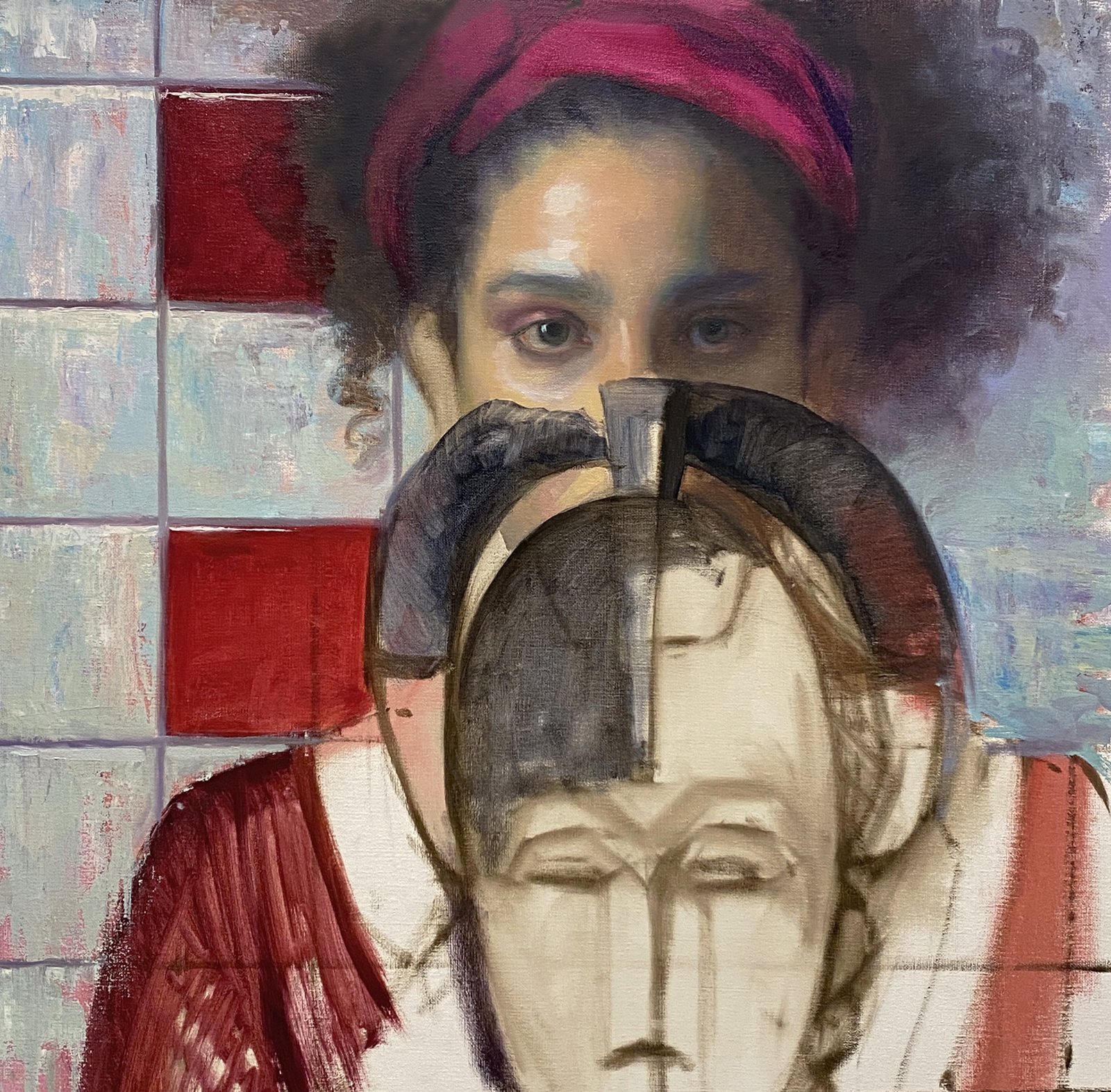
***
I continue by refining the portrait, looking for nuances in gradations of value, treatment of edges, and temperature changes. Edges play a large role in describing texture. For example, with the West African mask she holds, gold metal is explained with harder edges while the smooth, dark areas require softer paint handling.
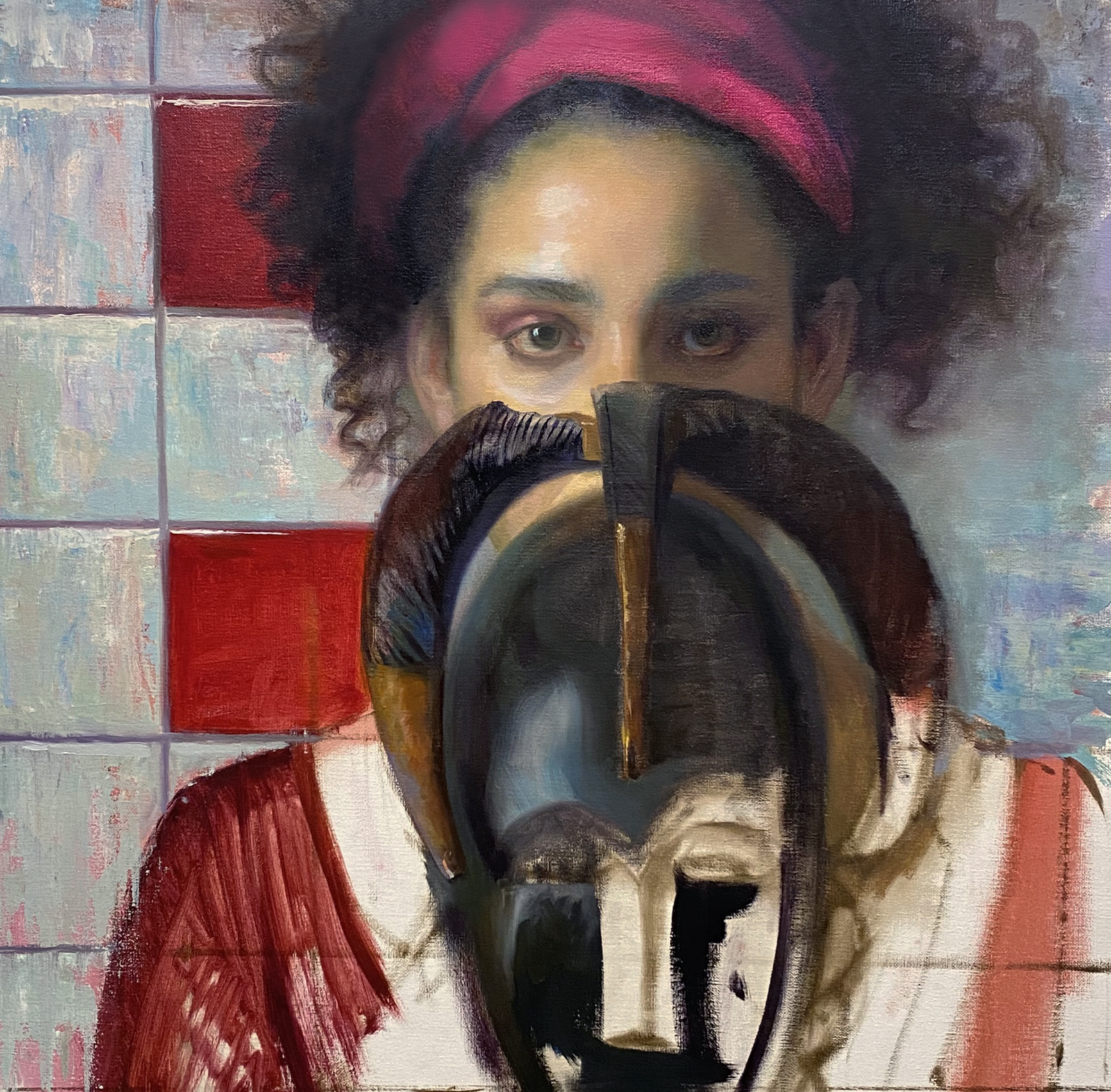
***
After blocking in the remainder of the mask with thicker layers, I switched to smaller round brushes to paint in details. The texture of her clothing was made with thin transparent glazes of Quinacridone Magenta and Burnt Umber. Glazing in between dry layers can achieve highly saturated colors, especially on a lighter canvas tone. I also added more adjustments and details to the subway tiles.
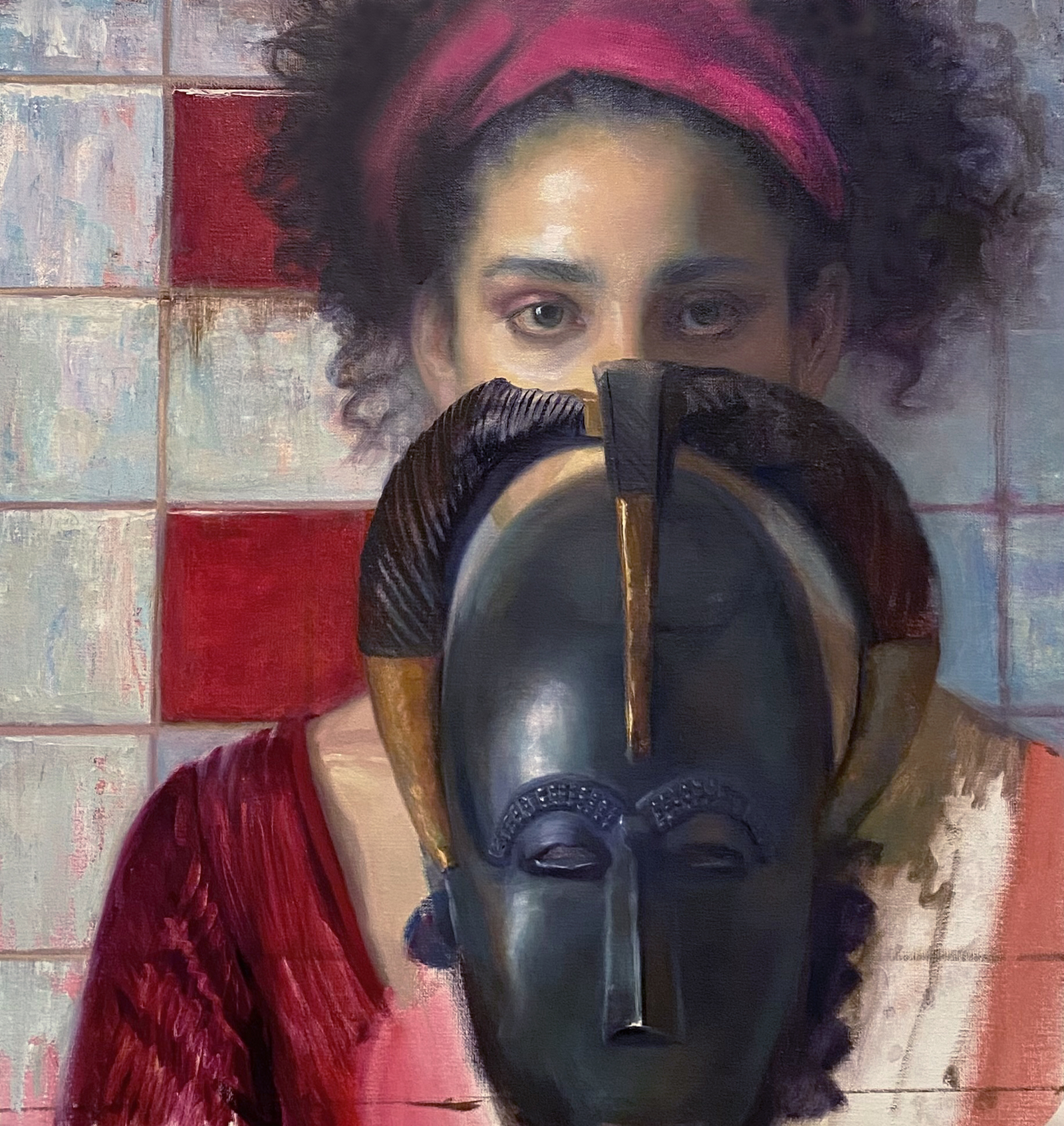
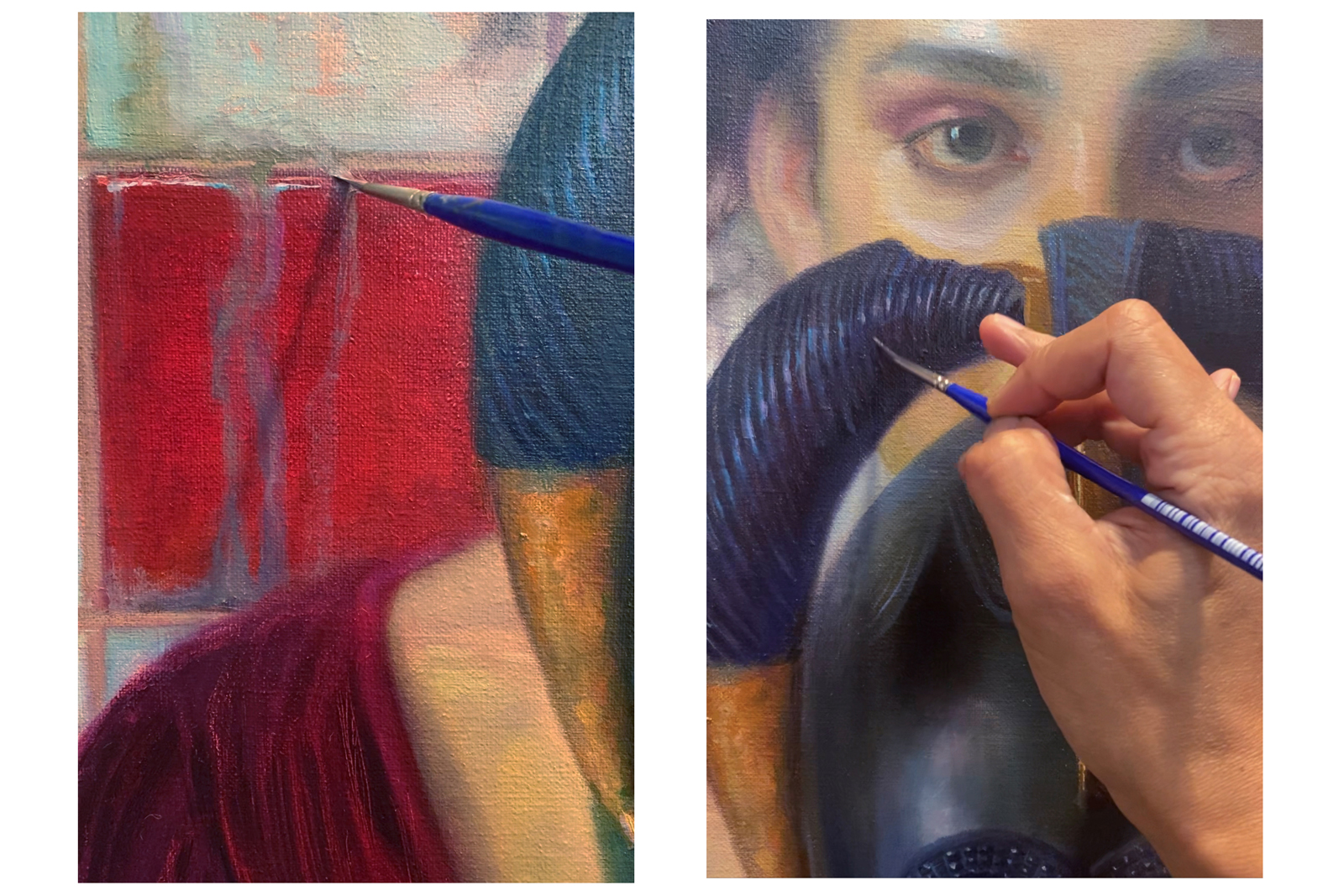
***
Turning my attention to her hands, I approach it in much the same way, focusing on the larger structure of value and color shifts before adding details such as fingernails and highlights. As I brought the painting to a finish, I added greens and purples into her skin tone for the reflected light in her left hand and shoulder.
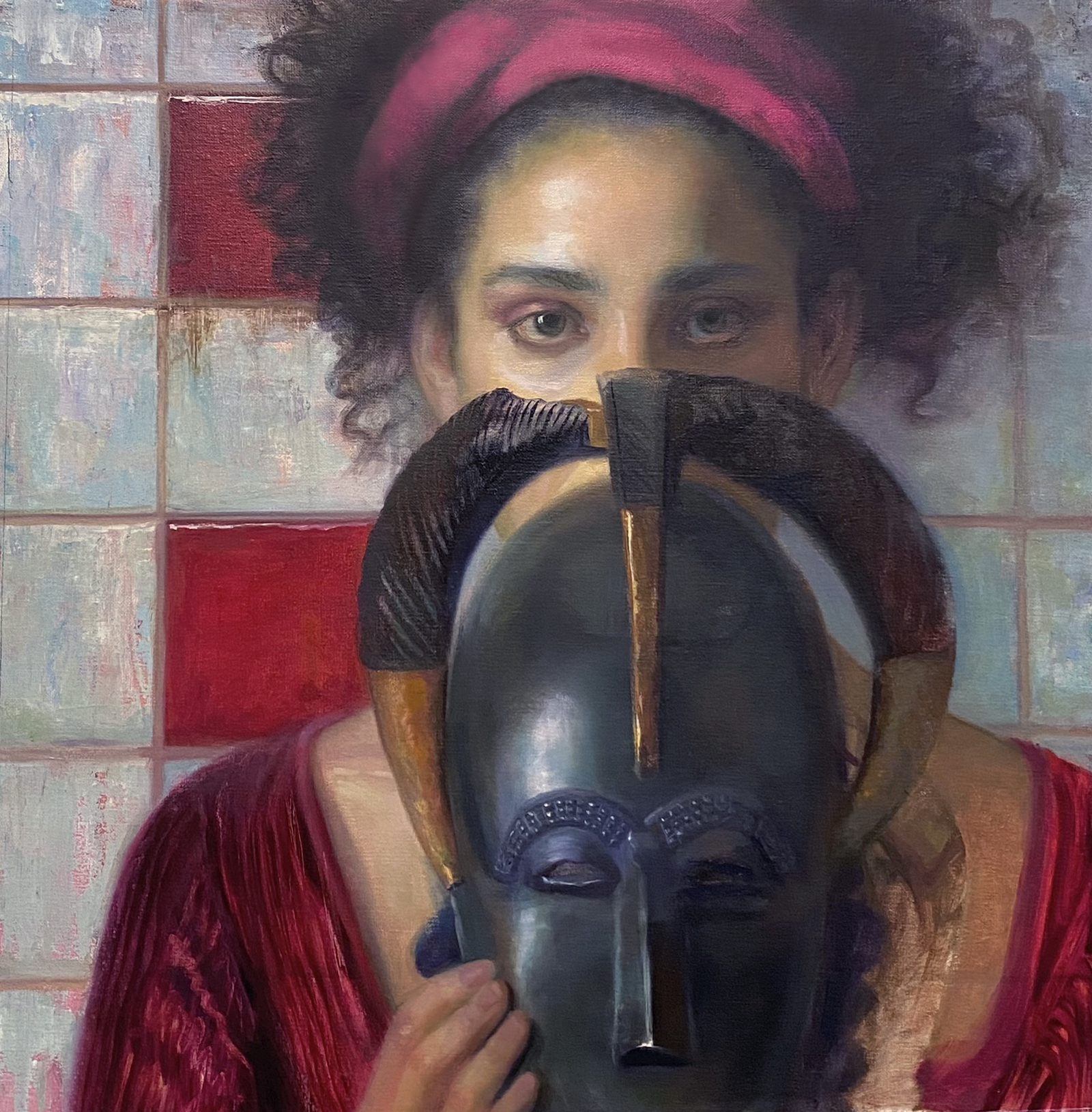
***
Additional works by Manu Saluja
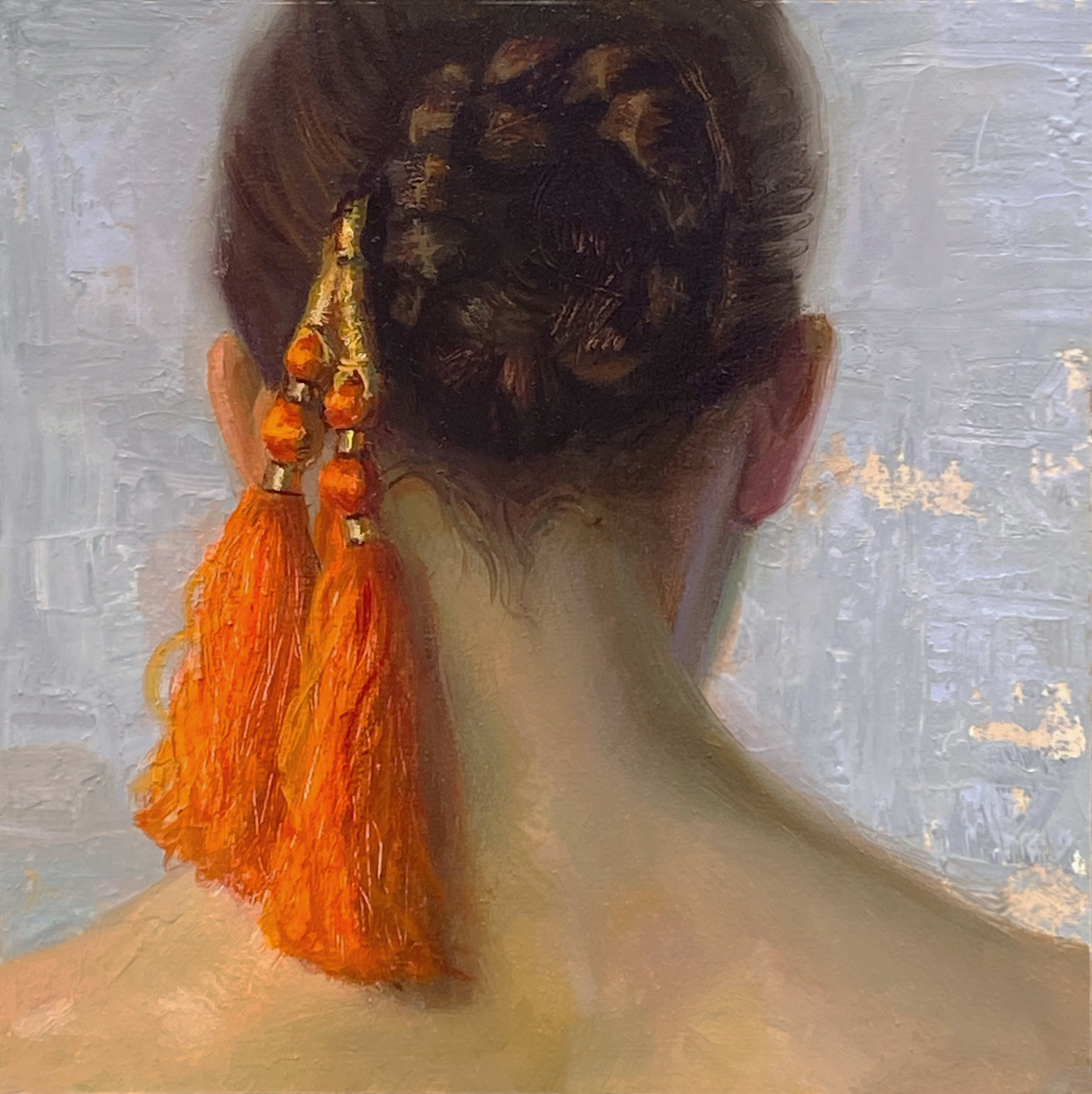
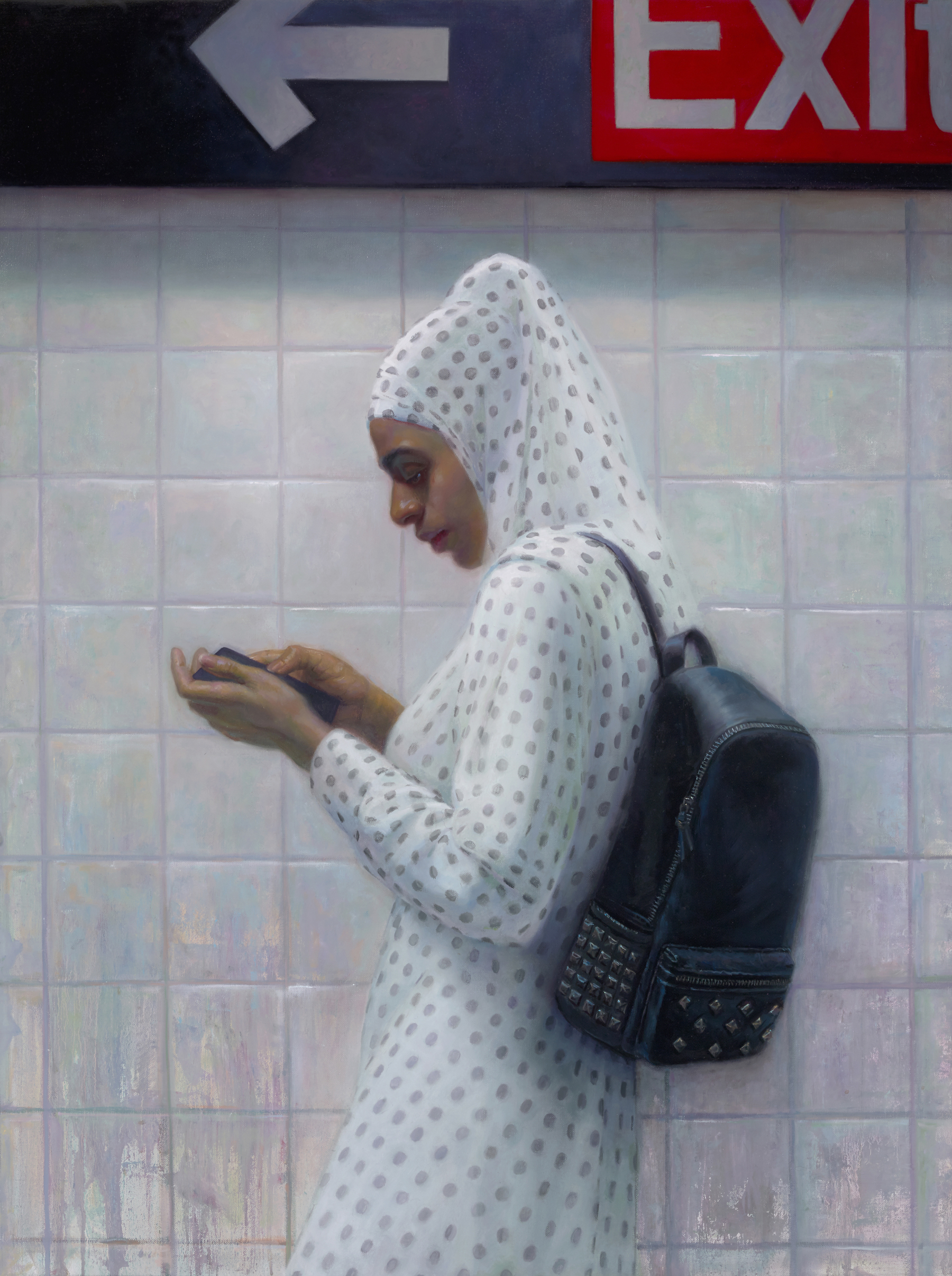
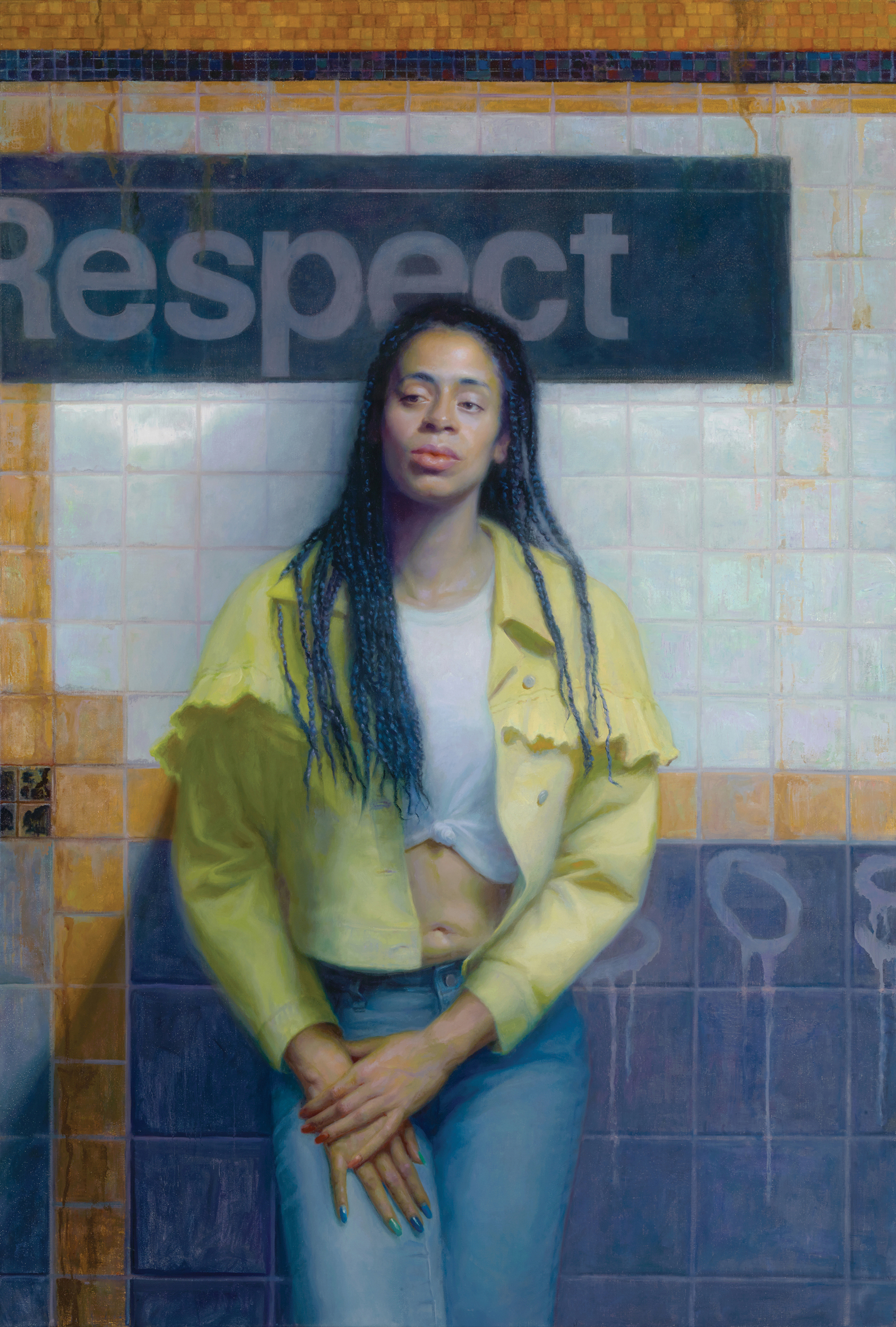
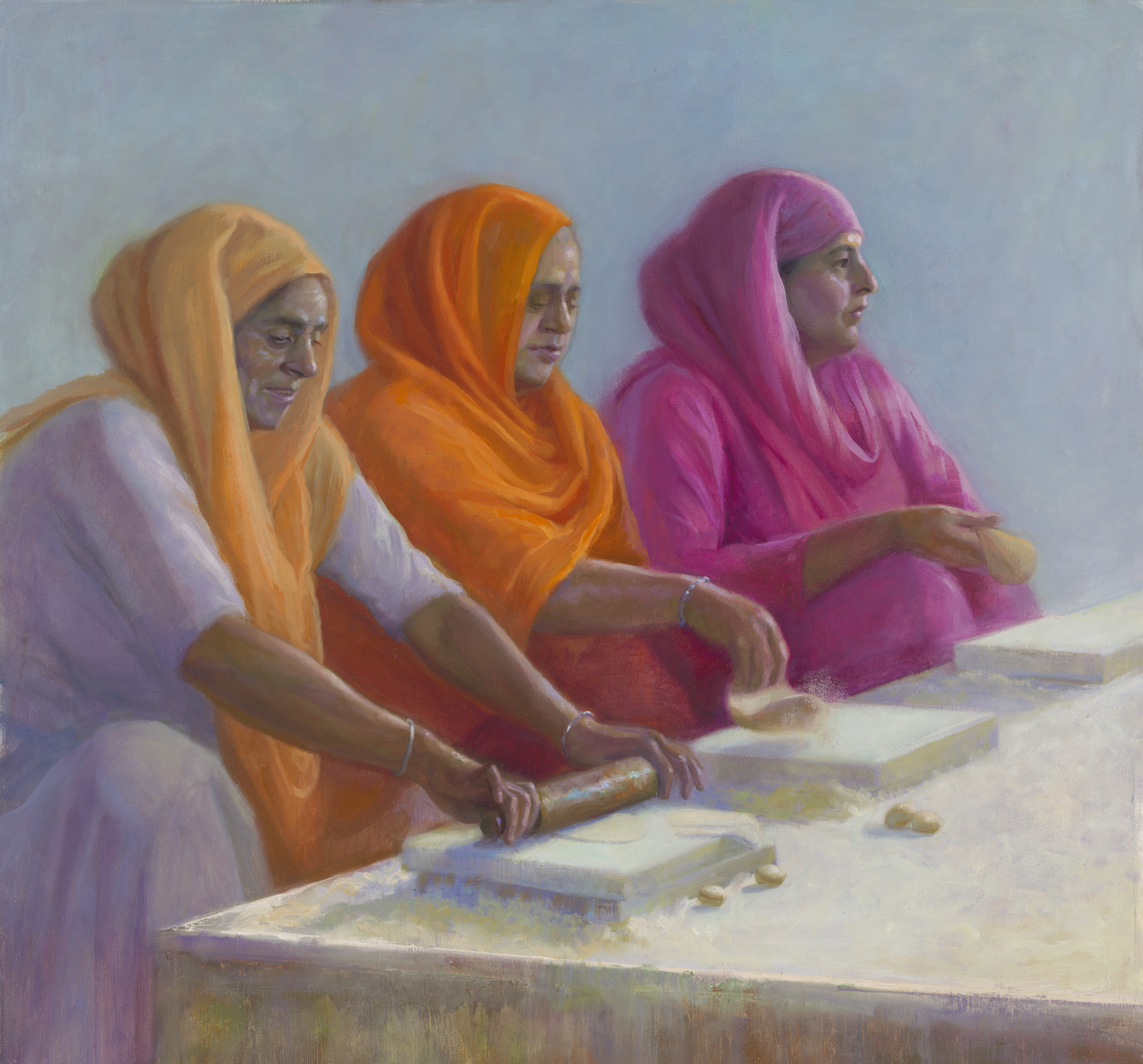
About the Artist:
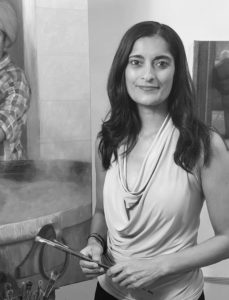
Manu Saluja’s work fuses the urban landscape of New York City with narratives of its complex and diverse people, reflecting on themes of cultural identity, femininity, and social perception. Rather than portray a sanitized version of her native city, its “wear and tear” becomes a backdrop for these narratives and, at times, the subject. Allowing light to flow over cracked, soiled tiles and chromatic, rusted steel girders with the same grace it would nature, she reimagines these spaces as sublime.
Saluja’s paintings have been exhibited at the National Portrait Gallery in London, the Royal Ontario Museum in Toronto, and the Wausau Museum of Contemporary Art in Wisconsin. Winner of the 2019 BP Portrait Travel Award, her resulting paintings were exhibited at the Aberdeen Art Gallery in Scotland in 2020. Saluja has participated in numerous group shows, and has work in public and private collections in the U.S., Canada, U.K. and India.
Saluja holds a B.A. in Psychology from Barnard College. She went on to study with John Frederick Murray privately and at the School of Visual Arts, receiving her BFA in 1997. She is currently Adjunct Professor of Painting at the New York Academy of Art where she received her MFA in 2013.
Born in Brooklyn in 1971, and a longtime resident of Queens, Saluja lives and works in Long Island, NY. Her work is available on artsy.net with 33 Contemporary, James Baird Gallery and Sugarlift Gallery.
Browse RealismToday.com for more articles celebrating contemporary realism in art.
Visit EricRhoads.com (Publisher of Realism Today) to learn about opportunities for artists and art collectors, including: Art Retreats – International Art Trips – Art Conventions – Contemporary Realism Art Workshops (in person and online) – And More!


